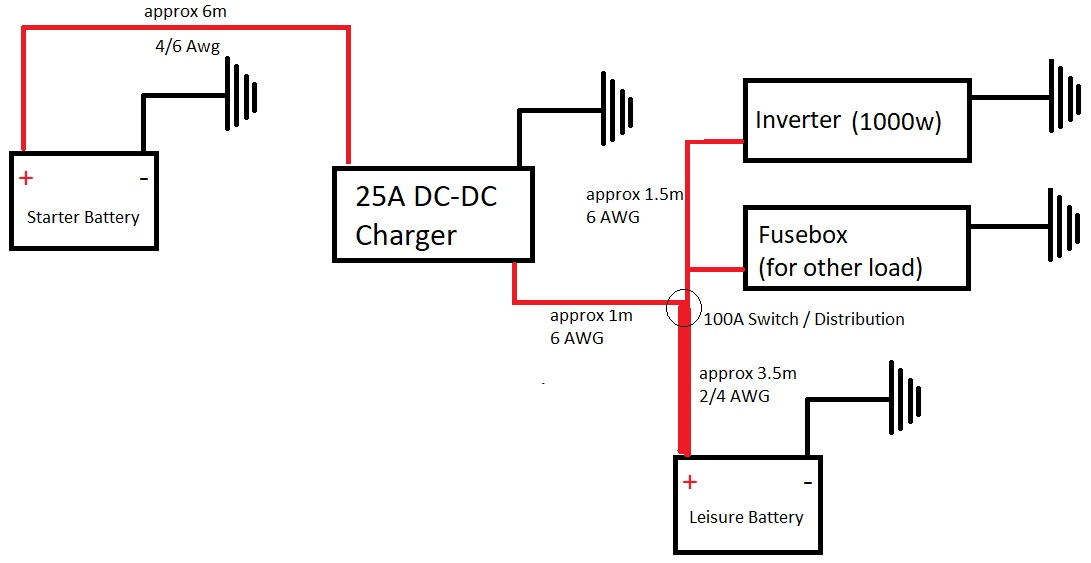mad85
New member
Currently working on installing a second battery and DC-DC charger in my Discovery 2. My requirements are that I do not lose offroad capability, and that I have a 1000W inverter mounted in the boot. I also do not want to loose any boot space, so the new battery will go instead of the compressor, mounted on the chassis, as mine is now converted to rear springs.
Does anyone think of anything why the following diagram would not work (i left required fuses out of the diagram for simplicity). Mostly interested in your opinion re wire thickness and if it would be ok to connect live wires from the dc dc charger and load to the battery through a distribution block rather than at the battery terminal. Anther question is, do I need to run earth wires or can I use the body/chassis for earth? maybe I can add a few more earth straps to improve the earth throughout.
I plan on purchasing a CTEK D250S (i know its an old model but I did find it at a very good price).

Does anyone think of anything why the following diagram would not work (i left required fuses out of the diagram for simplicity). Mostly interested in your opinion re wire thickness and if it would be ok to connect live wires from the dc dc charger and load to the battery through a distribution block rather than at the battery terminal. Anther question is, do I need to run earth wires or can I use the body/chassis for earth? maybe I can add a few more earth straps to improve the earth throughout.
I plan on purchasing a CTEK D250S (i know its an old model but I did find it at a very good price).

